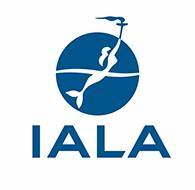Call: 1-800-832-7191

The International Aids to Navigation
The IALA (International Association of Marine Aids to Navigation and Lighthouse Authorities)
Understanding The International Aids to Navigation System
The International Aids to Navigation system ensures safe passage for vessels across global waters. Managed by organizations like IALA and IMO, this system includes buoys, beacons, lights, and electronic signals. Because maritime traffic continues to grow, standardized navigation aids are essential for preventing collisions and groundings.
These aids support both traditional and digital navigation methods. Mariners rely on them to identify hazards, follow safe routes, and comply with international regulations.
Components and Standards of the System
IALA developed the Maritime Buoyage System to unify navigation aids worldwide. This system includes lateral marks, cardinal marks, and special marks. Because consistency matters, vessels can interpret signals regardless of location.imo
Additionally, the system incorporates technologies like AIS transponders and Differential GPS. These tools enhance situational awareness and improve route planning. IMO’s SOLAS Convention mandates the use of certain aids under Chapter V.imo
The system also includes Vessel Traffic Services (VTS), which monitor and guide ships in congested or sensitive areas.
Why The International Aids to Navigation Are Vital
The International Aids to Navigation reduce risks in busy shipping lanes and environmentally sensitive zones. Traffic separation schemes, precautionary areas, and deep-water routes help vessels avoid hazards. Because weather and visibility vary, these aids provide reliable guidance under all conditions.imo
IMO and IALA collaborate to update standards and integrate emerging technologies. These updates ensure that aids remain effective and relevant. Moreover, they support sustainable development by minimizing environmental impact and enhancing maritime safety.
Governments and port authorities implement these systems to meet international obligations and protect marine ecosystems.
Future Developments and Global Cooperation
Technological innovation continues to shape The International Aids to Navigation system. Smart buoys, e-navigation platforms, and autonomous vessel integration are transforming how aids function. Because digital systems can overwhelm users, designers must balance information delivery with clarity.imo
Global cooperation remains essential. IMO and IALA work with member states to harmonize standards and share best practices. Training programs and technical assistance help developing nations implement effective navigation systems.
As maritime activity increases, maintaining and modernizing aids will be critical. Stakeholders must invest in infrastructure and collaborate to ensure safe, efficient, and sustainable navigation.